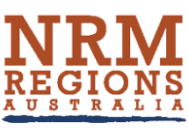This update represents just a handful among the hundreds of NRM projects happening across Australia, which are made possible through funding from the Australian Government and respective State/Territory governments.
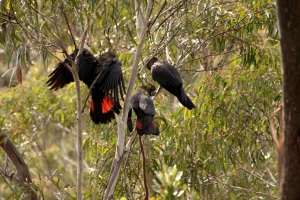
NSW Local Land Services, Charles Sturt University and Habitat Innovation & Management have undertaken work to help recover the breeding populations of the Glossy Black-Cockatoo. Through the installation of 35 specifically designed nest boxes located throughout the Central Tablelands and Central West Local Land Services regions of NSW.
The 2019-20 fires had a severe impact on the Glossy Black-Cockatoo, causing it to be listed as a threatened species. The research and monitoring of nesting activities aims to learn more about the ecological requirements of the birds when selecting a nesting site. Engagement with local landholders will provide educational field experience to allow for citizen science monitoring of the birds.
Image credit - CSIRO
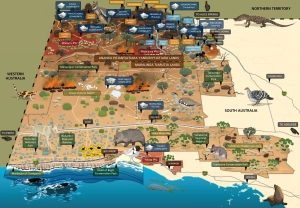
Australia’s only all-Aboriginal board, the Alinytjara Wilurara (AW) Landscape Board in South Australia, is welcoming four new members and a new Presiding Member.
The AW region covers more than 250,000km², from the Northern Territory and Western Australia borders, right down to the Great Australian Bight. The region is predominantly dedicated to conservation and traditional Aboriginal use and occupation.
New members joining the board are Jeremy Le Bois representing the Oak Valley/Maralinga Tjarutja Lands, Julieanne Campbell representing the Arangu Pitjantjatjara Yankunytjatjara (APY) Lands, and Peter Burgoyne and Wanda Miller representing the Far West Coast region, who will each be bringing their own in-depth insight into their lands.
Find out more about this project here.
Image credit - Landscape South Australia Alinytjara Wilurara
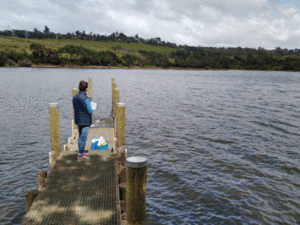 North NRM Region members in Tasmania have been putting ongoing effort into the monitoring of blue-green algae levels in Lake Trevallyn. Over the summer months, regular monitoring is used to inform water authorities and the public on whether the body of water is safe to use.
North NRM Region members in Tasmania have been putting ongoing effort into the monitoring of blue-green algae levels in Lake Trevallyn. Over the summer months, regular monitoring is used to inform water authorities and the public on whether the body of water is safe to use.
Warm water with low water flow is more likely to allow for blue-green algae growth, forming visible blooms that are hazardous to human health when in high concentration.
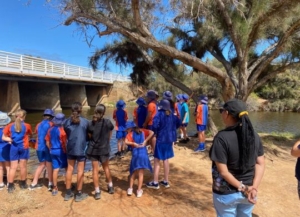
The Northern Agricultural Catchment Council (NACC) NRM Aboriginal Council Custodianship team has been working with local primary schools to raise awareness about the nature conservation efforts around the Chapman River and its wildlife.
School children were taken on a walk around the area with the Aboriginal Custodianship Program Coordinator and shown how to use their senses to connect to the Country along the river. The NACC NRM team managed a Rope History activity to teach the children more about the history surrounding WA, and a threatened species jigsaw was used to help the kids better understand the conservation of wildlife.
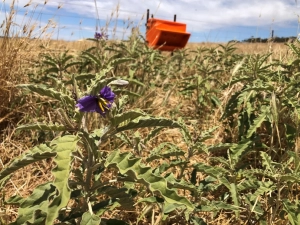
The Northern and Yorke Landscape Board have urged land managers in South Australia to catch new outbreaks of Silverleaf Nightshade, in an effort to prevent a crop yield problem. Large amounts of rainfall have increased the likelihood of the pests' arrival on properties.
The plant has the ability to rob crops of water and nutrients, and currently there is no herbicide treatments to deal with infestations. The plants root system can reach 2 metres or more below ground, increasing its resilience. More information on Silverleaf Nightshade and how to control it are available in the Australian Best Practice Management Manual 2018.
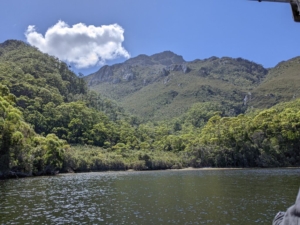
Tasmania’s NRM South Region has worked on support for the Orange-bellied Parrot (OBP) recovery. The OBP’s only breeding habitat is located in the Melaleuca valley, after the population migrates from Victoria and south-east SA in early Spring. The birds nest in hollow trees but are currently having to use nest-boxes to lay their eggs.
The goal of the project, undertaken by NRM South and researchers from the Australian National University, is to investigate if there are natural nesting opportunities available for the parrots. Researchers carried out 44 vegetation surveys and measured 991 trees, with 133 hollows measured. Only 19 trees were found to have hollows suitable for OBP to breed in, suggesting that the population of 70 parrots will have to continue to rely on nest-boxes.
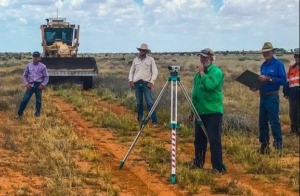
Desert Channels Group in Queensland has been holding workshops across the region about erosion and pasture rehabilitation. The workshops received unprecedented interest, being held in multiple locations in Queensland, from Longreach to the Northern Territory border.
Results from the demonstration days were seen quickly, with one property implementing the application of these concepts almost immediately.
View the video link at left to learn more about the work being done to control erosion and slow water, making it accessible to pasture species.
Read more about the work being undertaken and watch on the initiative here.
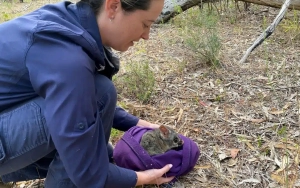
Many species endemic to south-west WA have seen a decline in numbers due to habitat loss and disturbances. Peel-Harvey Catchment Council (PHCC) have been surveying Treasure Block within the Myalup State Forest to understand who is inhabiting the Banksia Woodland and how to protect them. Pitfall, funnel traps, and cage and Elliot traps were installed to provide information on reptiles, amphibians, small mammals and marsupials. Skinks, snakes and frog species were also recorded. Results from the study will be used to conserve the declining and threatened species in the area.
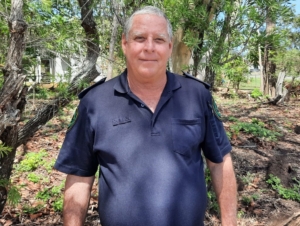 Gulf Savannah NRM is appealing to all those interested in helping their local firies. Talking with First Officer of Davies Creek Fire Brigade, Barry Keal, they discussed they ways people can assist their local fire services.
Gulf Savannah NRM is appealing to all those interested in helping their local firies. Talking with First Officer of Davies Creek Fire Brigade, Barry Keal, they discussed they ways people can assist their local fire services.
Barry stated that the biggest challenge they face is recruiting new people, particularly young people. There are also roles outside of fighting fires for people of all ages and abilities. This includes being a radio operator, arranging community events and community educators.
Read more on the interview here on page 18.
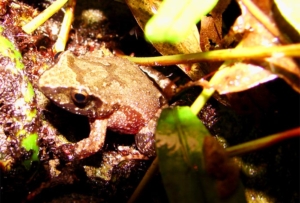
The Kroombit Tinkerfrongs are a small, endangered species of frog found only in central Queensland, in the Kroombit Tops National Park. The population is in decline due to feral pigs and fungal disease.
To save the frog from extinction, the Fitzroy Basin Association, Queensland Parks and Wildlife Sanctuary, Queensland Frog Society and multiple land managers are working together. Efforts to help the frog include aerial bating and coordinated control of the feral pigs, automated acoustic recorders to detect the species and population and captive frogs tested for disease. Around 100 frogs are also being bred in captivity to be released into Kroombit Tops National Park.
